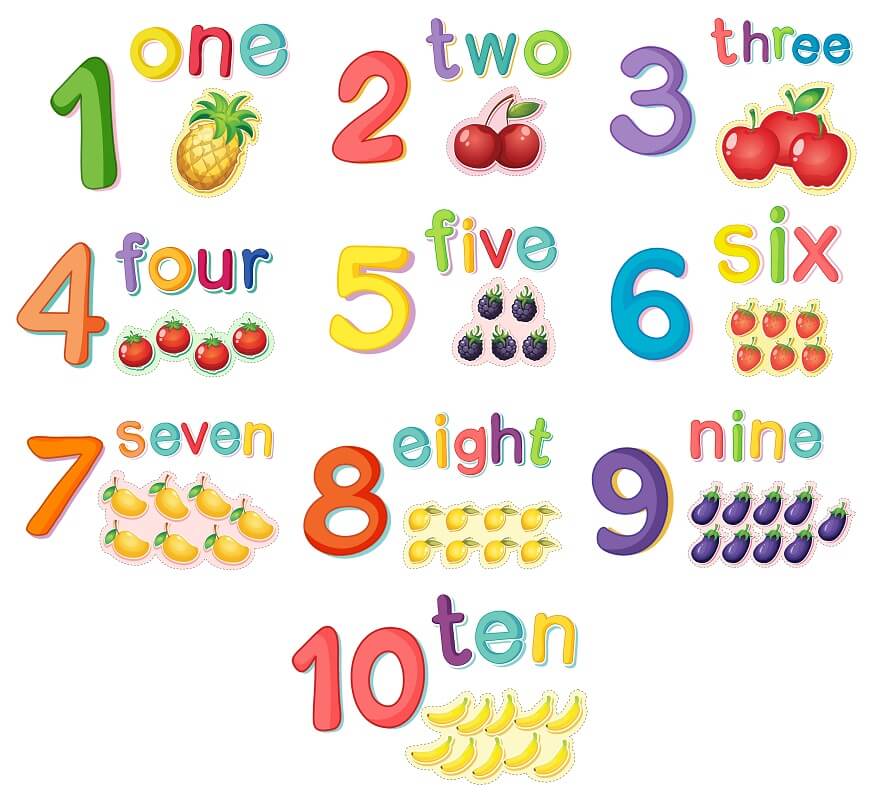Numbers are important in statistics because they tell us which score occurs most frequently. Even though we know how important the average of a group of numbers is, there is always more information that can be extracted from the raw data. Here is an example: it is necessary to know how similar a particular number is to the other numbers in the group. Hence, there are several types of numbers, some of which are integers, complex numbers, and perfect numbers, and then there are cardinal numbers. So today, we will learn a lot more about the meaning of cardinal numbers and cardinal sets, we will definitely look at some examples.
So one may ask what a cardinal number is. Well, the cardinal numbers are the counting numbers that start from 1 and go on in a sequence and are not fractions. The examples of cardinal numbers are: 1, 2, 3, 4, 5, 6, 7, 8, 9, 10, 11, 12, 13, 14, 15, 16, 17, 18, 19, 20, and so on. The Meaning of a cardinal number is “how many” of anything exist in a group.
Meaning of cardinal number: they do not include fractions or decimals. They are natural numbers or positive integers. The smallest cardinal number is 1. In math, cardinal numbers, or cardinals as we call them for short, are simply generalizing natural numbers that are used to measure the cardinality of sets. So, to make this more understandable, the cardinality of a finite set is a natural number: the number of elements in the set. It means all the natural numbers come within this category. Therefore, we can write the list of cardinal numbers as follows:
|
0 Zero |
|
1 One |
|
2 Two |
|
3 Three |
|
4 Four |
|
5 Five |
|
6 Six |
|
7 Seven |
|
8 Eight |
|
9 Nine |
|
10 Ten |
|
11 Eleven |
|
12 Twelve |
|
13 Thirteen |
|
14 Fourteen |
|
20 Twenty |
|
30 Thirty |
|
40 Forty |
|
50 Fifty |
|
100 One hundred |
So now that we know what Cardinal Numbers are, let us try to understand what Cardinal sets are. The number of elements in a set is known as that sets cardinality. If A is a finite set and it has N elements, then the cardinality of set A is actually N. Remember that the empty sets of cardinality is always zero.
Now that we understand what Cardinal Numbers and Cardinal Sets are, let us have a look at the difference between Cardinal Numbers and Ordinal Numbers. So basically, ordinal and cardinal numbers are very different from each other. Ordinal numbers are those numbers that denote the position of an object or something, and to understand this further, here is an example: 1st, 2nd, 3rd, 4th, 5th, 6th, 7th, 8th, 9th, 10th, 11th, 12th, 13th, 14th, 15th, 16th, 17th, 18th, 19th, 20th, and so on.
So, if many objects or things are mentioned in a single list the order of that object or thing is defined by the ordinal number. As shown above in the example.
Here are some Cardinal numbers examples and Ordinal Numbers in a chart.
|
Numbers |
Cardinal |
Ordinal |
|
7 |
Seven |
Seventh |
|
8 |
Eight |
Eighth |
|
9 |
Nine |
Ninth |
|
10 |
Ten |
Tenth |
Additionally here are some more examples:
- Anirudh got 1st position in the drawing competition.
- The 7th chair in the 3rd row is booked.
- Smitha got a 2nd chance to attempt in the marathon.
- Nina and Seema both sat on the 4th bench in the class.
- The 9th standard students were very noisy.
So, these given numbers help us to form different cardinal numbers based on the counting of objects.
In simple words, infinity is referred to as the concept of ‘forever’ or ‘without an end’. In math, infinity is treated as a surpassing cardinal number, which is very different from a regular numbers. Hence, cardinal numbers are used to describe the sizes of sets, thus it is referred to as infinity.
So by now we should know the meaning of cardinal number which is: a number denoting quantity, as opposed to an ordinal number. Since we know now that the cardinality of a group represents the number of objects available in that particular group.
Below mentioned are some additional Cardinal Numbers examples:
- There are 9 Blue trousers in the bag.
- 6 bikes are driving in a lane.
- Some friends are playing with 1 dog and 2 cats in the street.
In the above examples, the numbers 9, 6, 1 and 2 are the cardinal numbers. So basically it indicates the quantity of an object or something, irrespective of its order. Cardinal numbers definitely define the measurement of the size of a set but they definitely do not take account of the order.
Cardinal Numbers in English: define how many things or people are there at the time. Let us look at the example below to understand this well:
- Seven boys are standing on a bench.
- There are six cupcakes kept on the table.
- There are three books on the shelf.
- There is one moon in the sky.
- Hallie and Sammie have two pairs of shoes.
These numbers are written exactly in the same way as one can write numbers in words. For the first 10 numbers, we can write as mentioned in the chart below.
In the chart below is how you can write Cardinal numbers 10 to 20.
|
1 – One |
11 – Eleven |
|
2 – Two |
12 –Twelve |
|
3 – Three |
13 – Thirteen |
|
4 – Four |
14 – Fourteen |
|
5 – Five |
15 – Fifteen |
|
6 – Six |
16 – Sixteen |
|
7 – Seven |
17 – Seventeen |
|
8 – Eight |
18 – Eighteen |
|
9 – Nine |
19 – Nineteen |
|
10 – Ten |
20 – Twenty |
In the chart below are Cardinal Numbers in Multiples of 10 which is considered another set representing the multiples of 10.
|
10 – Ten |
|
20 – Twenty |
|
30 – Thirty |
|
40 – Forty |
|
50 – Fifty |
|
60 – Sixty |
|
70 – Seventy |
|
80 – Eighty |
|
90 – Ninety |
|
100 – Hundred |
In the chart below are Cardinal Numbers 100 to 1000.
|
100 |
One hundred |
|
200 |
Two hundred |
|
300 |
Three hundred |
|
400 |
Four hundred |
|
500 |
Five hundred |
|
600 |
Six hundred |
|
700 |
Seven hundred |
|
800 |
Eight hundred |
|
900 |
Nine hundred |
|
1000 |
One thousand |
The list below contains larger Cardinal Numbers.
|
10,000 |
Ten Thousand |
|
100,000 |
One hundred thousand |
|
1,000,000 |
One million |
|
10,000,000 |
Ten million |
The large cardinal numbers are used when many objects or people have to be represented. For example, the population of a place is 300,000 (three lakhs).
At EuroSchool, we want to let our students get ahead of themselves by learning the facts about numbers. We ensure every student knows that Cardinal numbers are also called counting numbers and natural numbers at the same time. We eliminate any form of confusion and dedicate time to ensure our students follow what is being taught in the class. As we all know that all the cardinal numbers can be written in words, we want every student to write their future with bright numbers that will only help them today and in the future.









